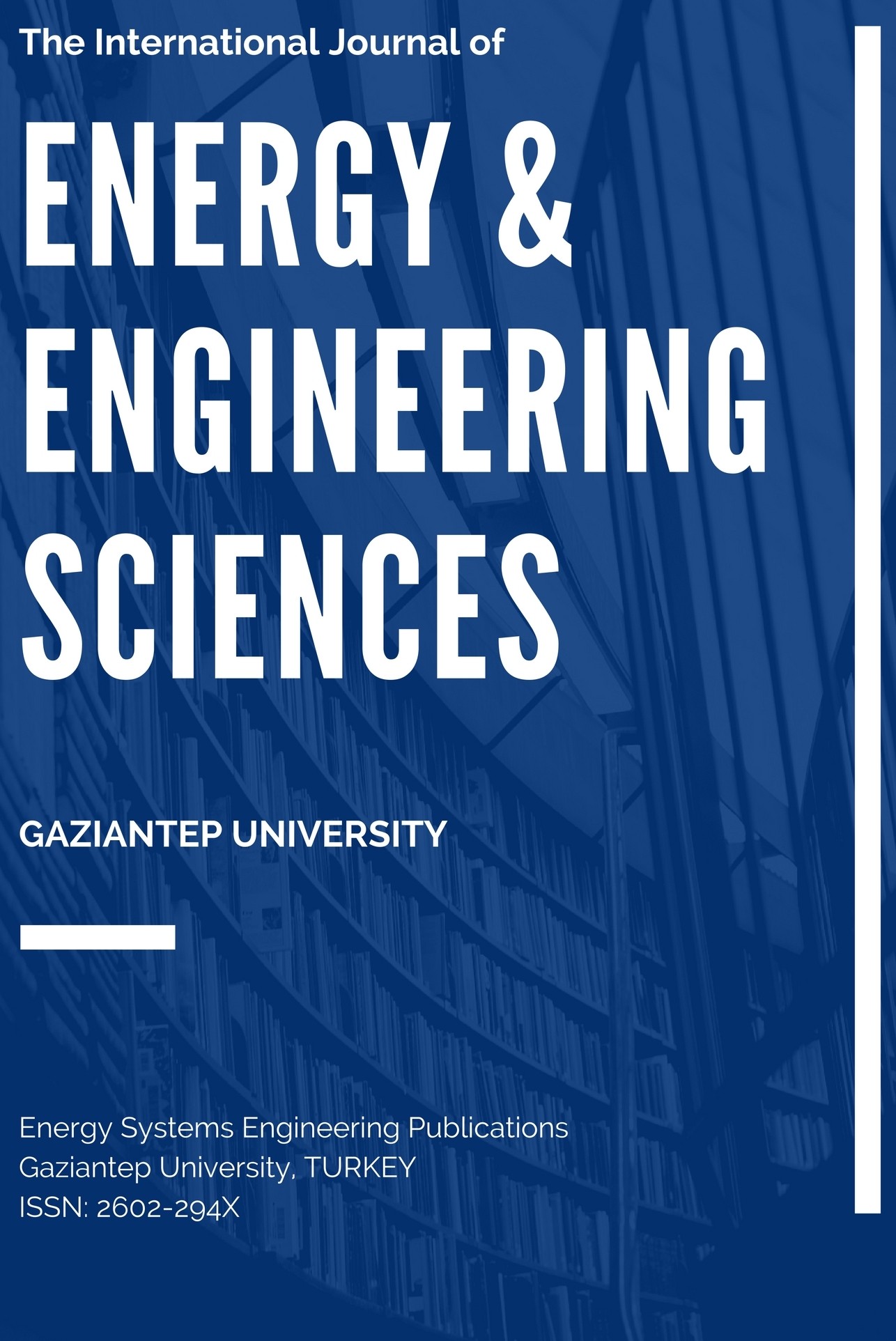A COMPARATIVE STUDY ON SEWAGE SLUDGE ASH AFFECTING FABRIC/EPOXY COMPOSITES MECHANICAL PROPERTIES OF GLASS FABRIC/EPOXY COMPOSITES
A COMPARATIVE STUDY ON SEWAGE SLUDGE ASH AFFECTING FABRIC/EPOXY COMPOSITES MECHANICAL PROPERTIES OF GLASS FABRIC/EPOXY COMPOSITES
particle, polymer fiber, mechanical properties,
___
- ASTM D 638-10. (2010). Standard Test Method for Tensile Properties of Plastics; 2010.
- ASTM D 790-10. Standard Test Methods for Flexural Properties of Unreinforced and Reinforced Plastics and Electrical Insulating Materials.
- Bhagyashekar MS, Rao RM. (2010). Characterization of mechanical behavior of metallic and non-metallic particulate filled epoxy matrix composites. J Reinf Plast Compos; 29(1): 30-44.
- Coleman JN, Khan U, Blau WJ, Gun’ko YK. (2006). Small but strong: a review of the mechanical properties of carbon nano tube polymer composites. Carbon; 44(9):1624–52.
- Dadfar MR, Ghadami F. (2013). Effect of rubber modification on fracture toughness properties of glass reinforced hot cured epoxy composites. Mater Des;47(0):16–20.
- Davis DC, Wilkerson JW, Zhu JA, Ayewah DOO. (2010). Improvements in mechanical properties of a Carbon fiber epoxy composite using nanotube science and technology. Compos Struct; 92(11), 2653–2562.
- Fu SY, Feng XQ, Lauke B, Mai YW. Effects of particle size, particle/matrix interface adhesion and particle loading on mechanical properties of particulate– polymer composites. Composites Part B 2008; 39: 933–961.
- Jen M-HR, Tseng Y-C, Wu C-H. (2005). Manufacturing and mechanical response of nanocomposite laminates. Compos Sci Technol; 65(5): 775–9.
- Qinghua Q, Jianqiao Y. (2015). Toughening Mechanisms in Composite Materials. UK: Woodhead Publishin; 2015.
- Moczo J and Pukanszky B. (2008). Polymer micro and nanocomposites: Structure, interactions, properties. J. of Industrial and Engineering Chemistry .
- Kütük M. A. and Aksoy M. (2013). “A Case Study On Sewage Sludge Incıneratıon Plant: GASKI, ” in Proceedings of the Second International Conference on Water, Energy and the Environment Kusadası, Turkey, 2013.
- Patnaik A, Satapathy A, Mahapatra SS, (2009). Dash RR. A comparative study on different ceramic fillers affecting mechanical properties of glass-polyester composites. J Reinf Plast Compos; 28(11), 1305-1320.
- Sathishkumar TP, Satheeshkumar S, Naveen J. (2009). Glass fiber-reinforced polymer composites – a review. J. Reinf. Plast. Comp. 33(13) 1258–75.
- Smol M., Kulczycka J, Henclik A., Gorazda K., Wzorek Z. (2015). The possible use of sewage sludge ash (SSA) in the construction industry as a way towards a circular economy, J. Cleaner Production, 95, 45 – 54.
- TUIK, (2010). “Municipals Waste Water Statistics,” Turkish Statistical Institute.
- Van der Heijden S, Daelemans L, De Schoenmaker B, De Baere L, Rachier H, Van Paepegem W, et al. (2014).Interlaminar toughening of resin transfer moulded glass fibre epoxy laminates by polycaprolactone electrospun nanofibres. Compos Sci Technol;104(19):6673.
- Wang K, Cheng L, Wu JS, Toh ML, He CB, Yee AF. (2005). Epoxy Nanocomposites with highly exfoliated clay: mechanical properties and fracture mechanisms. Macromolecules;38:788–800.
- Wang Z, Huang X, Bai L, Du R, Liu Y, Zhang Y, Zaho G. (2016). Effect of micro-Al contents on mechanical property of carbon fiber reinforced epoxy matrix composites. Compos Part BEng; 91:392–98.
- ISSN: 2602-294X
- Yayın Aralığı: Yılda 2 Sayı
- Başlangıç: 2016
- Yayıncı: Gaziantep Üniversitesi
A GENERATION OF ELECTRICITY FOR A RESIDENCE WITH WASTE ENERGY RECOVERY GENERATOR
İsmail KARALI, Ahmet KABUL, Mehmet Ali ÖZÇELİK
WEAR PROPERTIES OF NANOFILLED AND MICROFILLED COMPOSITE RESTORARIVE MATERIALS
Efe Çetin YILMAZ, Recep SADELER
ONE DIMENSIONAL MODELING OF GASOLINE ALCOHOL DUAL FUEL COMBUSTION ENGINE
Mustafa YILMAZ, Hasan KÖTEN, Ramin Saadat POUR
PERFORMANCE EVALUATION OF HARMONICS ON POWER QUALITY: CASE STUDY
